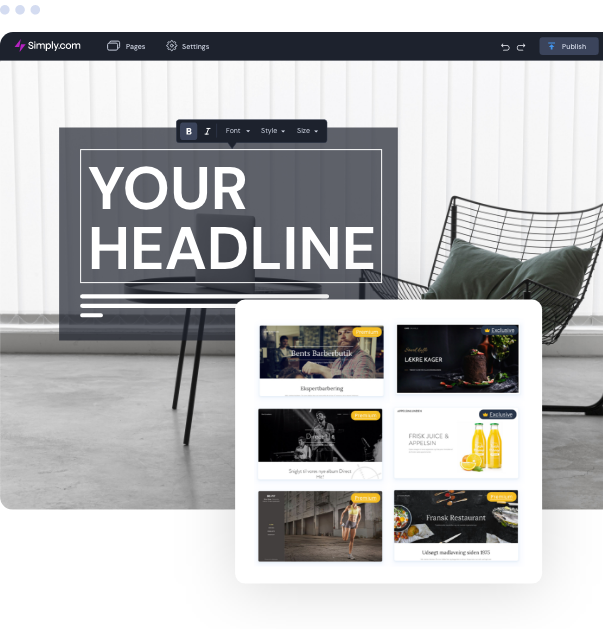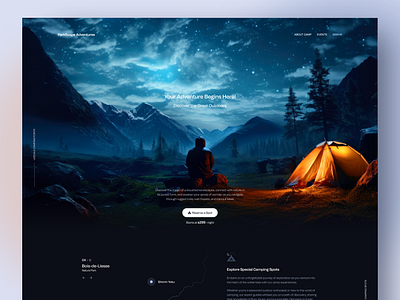The Ultimate Guide to Website Design: Tips for Creating Stunning Websites
Modern Internet Site Style That Captures Attention and Transforms
In a significantly digital landscape, modern-day internet site style has become an essential variable in catching user focus and driving conversions. By strategically utilizing aesthetic hierarchy, receptive designs, and involving interactive aspects, developers can develop experiences that not just attract visitors however likewise promote significant communications. Additionally, efficient call-to-action approaches play a crucial function in assisting users towards desired results. As we explore these necessary elements, it becomes clear that comprehending their interaction can considerably influence a web site's efficiency and user contentment. What are the essential components that really make a distinction?
Significance of Visual Pecking Order
Visual pecking order is a critical element in web site style, as it overviews customers' attention and improves their total experience. By strategically organizing content, developers can route users to the most essential information initially, consequently raising interaction and boosting functionality.
Incorporating a rational flow in material plan is crucial; for instance, placing the most critical information on top of a page promotes immediate acknowledgment. Regular use of typography, such as differing font dimensions and styles, assists develop a clear content structure. This organization not just aids in navigating however additionally builds trust, as users feel extra comfy when they can conveniently discover what they are trying to find.
Eventually, a well-executed aesthetic pecking order not only boosts visual allure but likewise substantially affects customer habits. By focusing on essential aspects and guaranteeing a smooth experience, developers can successfully convert site visitors right into consumers, strengthening the importance of this foundational style concept in modern-day web site growth.
Responsive Design for All Gadgets
Producing a smooth experience throughout various devices is necessary in today's digital landscape, where customers gain access to websites from smartphones, desktop computers, and tablets alike. Responsive design is a vital strategy that makes certain sites adapt fluidly to various screen resolutions, sizes, and positionings. By using adaptable grids, pictures, and CSS media queries, developers can create formats that keep aesthetic integrity and capability, no matter the tool being utilized.
The value of receptive style prolongs past appearances; it directly affects customer engagement and conversion rates. A web site that operates well on all tools urges longer visits and reduces bounce rates, as individuals are much more most likely to connect with web content that is simple to navigate. In addition, internet search engine, specifically Google, prioritize mobile-friendly sites in their positions, making receptive style a vital element of search engine optimization (SEO)
Including responsive style not only improves individual experience yet also improves the development procedure. By developing a solitary website that works throughout tools, organizations can save time and resources contrasted to establishing different mobile and desktop variations. Inevitably, receptive style is a basic approach for modern-day site style, guaranteeing availability and fulfillment for all customers, despite their tool.
Involving Interactive Aspects
While a receptive style prepares for a practical website, integrating interesting interactive aspects is critical for catching individual focus and fostering deeper links. Website Design. Interactive components, such as animations, tests, and clickable infographics, create an extra vibrant individual experience, urging site visitors to invest even more time on the website
Including interactive attributes can likewise assist users through facility details, making it less complicated to digest content. For example, interactive sliders can show item variations, while embedded videos can give presentations or testimonies that resonate even more than fixed pictures or text. Additionally, gamification techniques, like benefits for completing tasks or engaging with content, can boost user motivation and retention.
Efficient use interactive aspects not just enriches the individual experience but can additionally result in greater conversion rates. By making communications interesting and satisfying, services can grow a feeling of loyalty and trust with their audience. It is crucial to stabilize interactivity with efficiency; overly complicated functions may hinder website rate, adversely influencing customer contentment. Eventually, incorporating properly designed interactive elements can considerably boost a website's efficacy, driving interaction and conversions in today's affordable electronic landscape.
Structured Navigation Practices
Reliable navigation is a foundation of any effective website, as it directly affects customer experience and content availability. Structured navigation practices guarantee that individuals can quickly find details, over at this website boosting their communication with the site. A well-structured navigating food selection must be simple and user-friendly, typically featuring a minimal variety of main classifications to stay clear of overwhelming visitors.
To achieve streamlined navigation, developers must prioritize a hierarchical framework that realistically arranges content. Applying breadcrumb trails can give customers with context concerning their current area within the site, enabling seamless backtracking. Additionally, utilizing drop-down food selections can efficiently save room while still offering access to subcategories.
Receptive design is crucial, as navigating must be practical across all devices (Website Design). Mobile users, particularly, take advantage of touch-friendly menus and collapsible sections that maintain use without jeopardizing aesthetics

Efficient Call-to-Action Techniques
A well-crafted call-to-action (CTA) is crucial for assisting customers toward desired outcomes on a website, as it urges them to engage with web content or purchase. To maximize their effectiveness, CTAs should be clear, engaging, and purposefully positioned throughout the site.
First, use action-oriented language that connects urgency or worth, such as "Begin," "Sign up with Now," or "Insurance claim Your Discount." This language not only inspires users however additionally sets clear expectations concerning the next actions.
2nd, think about layout elements; CTAs should attract attention visually with contrasting shades, sufficient whitespace, and famous positioning. A switch that is easy to see and click boosts the likelihood of individual communication.
In addition, personalizing CTAs based on customer behavior or demographics can substantially boost involvement. Customized messages resonate a lot more with customers, driving greater conversion prices.

Conclusion
In final thought, modern-day website design highlights the assimilation of visual pecking order, receptive formats, involving interactive elements, structured navigating, and reliable call-to-action strategies. These components jointly enhance individual experience, making sure that site visitors continue to be involved and motivated to check out web content better. By focusing on these design concepts, companies can dramatically improve customer retention and conversion prices, eventually causing better success in the electronic landscape. The continual advancement of internet design highlights its essential duty in reliable on the internet interaction and advertising and marketing.
In a progressively digital landscape, modern-day internet site style has arised as a critical element in capturing customer interest and driving conversions.Visual hierarchy is a crucial element in internet site style, as it guides customers' interest and improves their total experience.The relevance of responsive layout expands past visual appeals; it directly influences individual engagement and conversion rates.Including receptive design Discover More Here not only improves individual experience however likewise enhances the advancement procedure. Inevitably, responsive design is a basic technique for click to read more modern-day site layout, ensuring accessibility and contentment for all individuals, no matter of their device.